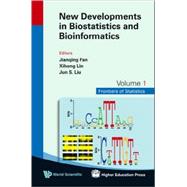
What is included with this book?
| Preface | |
| Analysis of Survival and Longitudinal Data | |
| Non- and Semi- Parametric Modeling in Survival Analysis | p. 3 |
| Introduction | p. 3 |
| Cox's type of models | p. 4 |
| Multivariate Cox's type of models | p. 14 |
| Model selection on Cox's models | p. 24 |
| Validating Cox's type of models | p. 27 |
| Transformation models | p. 28 |
| Concluding remarks | p. 30 |
| References | p. 30 |
| Additive-Accelerated Rate Model for Recurrent Event | p. 35 |
| Introduction | p. 35 |
| Inference procedure and asymptotic properties | p. 37 |
| Assessing additive and accelerated covariates | p. 40 |
| Simulation studies | p. 41 |
| Application | p. 42 |
| Remarks | p. 43 |
| Acknowledgements | p. 44 |
| Appendix | p. 44 |
| References | p. 48 |
| An Overview on Quadratic Inference Function Approaches for Longitudinal Data | p. 49 |
| Introduction | p. 49 |
| The quadratic inference function approach | p. 51 |
| Penalized quadratic inference function | p. 56 |
| Some applications of QIF | p. 60 |
| Further research and concluding remarks | p. 65 |
| Acknowledgements | p. 68 |
| References | p. 68 |
| Modeling and Analysis of Spatially Correlated Data | p. 73 |
| Introduction | p. 73 |
| Basic concepts of spatial process | p. 76 |
| Spatial models for non-normal/discrete data | p. 82 |
| Spatial models for censored outcome data | p. 88 |
| Concluding remarks | p. 96 |
| References | p. 96 |
| Statistical Methods for Epidemiology | |
| Study Designs for Biomarker-Based Treatment Selection | p. 103 |
| Introduction | p. 103 |
| Definition of study designs | p. 104 |
| Test of hypotheses and sample size calculation | p. 108 |
| Sample size calculation | p. 111 |
| Numerical comparisons of efficiency | p. 116 |
| Conclusions | p. 118 |
| Acknowledgements | p. 121 |
| Appendix | p. 122 |
| References | p. 126 |
| Statistical Methods for Analyzing Two-Phase Studies | p. 127 |
| Introduction | p. 127 |
| Two-phase case-control or cross-sectional studies | p. 130 |
| Two-phase designs in cohort studies | p. 136 |
| Conclusions | p. 149 |
| References | p. 151 |
| Bioinformatics | |
| Protein Interaction Predictions from Diverse Sources | p. 159 |
| Introduction | p. 159 |
| Data sources useful for protein interaction predictions | p. 161 |
| Domain-based methods | p. 163 |
| Classification methods | p. 169 |
| Complex detection methods | p. 172 |
| Conclusions | p. 175 |
| Acknowledgements | p. 175 |
| References | p. 175 |
| Regulatory Motif Discovery: From Decoding to Meta-Analysis | p. 179 |
| Introduction | p. 179 |
| A Bayesian approach to motif discovery | p. 181 |
| Discovery of regulatory modules | p. 184 |
| Motif discovery in multiple species | p. 189 |
| Motif learning on ChIP-chip data | p. 195 |
| Using nucleosome positioning information in motif discovery | p. 201 |
| Conclusion | p. 204 |
| References | p. 205 |
| Analysis of Cancer Genome Alterations Using Single Nucleotide Polymorphism (SNP) Microarrays | p. 209 |
| Background | p. 209 |
| Loss of heterozygosity analysis using SNP arrays | p. 212 |
| Copy number analysis using SNP arrays | p. 216 |
| High-level analysis using LOH and copy number data | p. 224 |
| Software for cancer alteration analysis using SNP arrays | p. 229 |
| Prospects | p. 231 |
| Acknowledgements | p. 231 |
| References | p. 231 |
| Analysis of ChIP-chip Data on Genome Tiling Microarrays | p. 239 |
| Background molecular biology | p. 239 |
| A ChIP-chip experiment | p. 241 |
| Data description and analysis | p. 244 |
| Follow-up analysis | p. 249 |
| Conclusion | p. 254 |
| References | p. 254 |
| Subject Index | p. 259 |
| Author Index | p. 261 |
| Table of Contents provided by Ingram. All Rights Reserved. |
The New copy of this book will include any supplemental materials advertised. Please check the title of the book to determine if it should include any access cards, study guides, lab manuals, CDs, etc.
The Used, Rental and eBook copies of this book are not guaranteed to include any supplemental materials. Typically, only the book itself is included. This is true even if the title states it includes any access cards, study guides, lab manuals, CDs, etc.